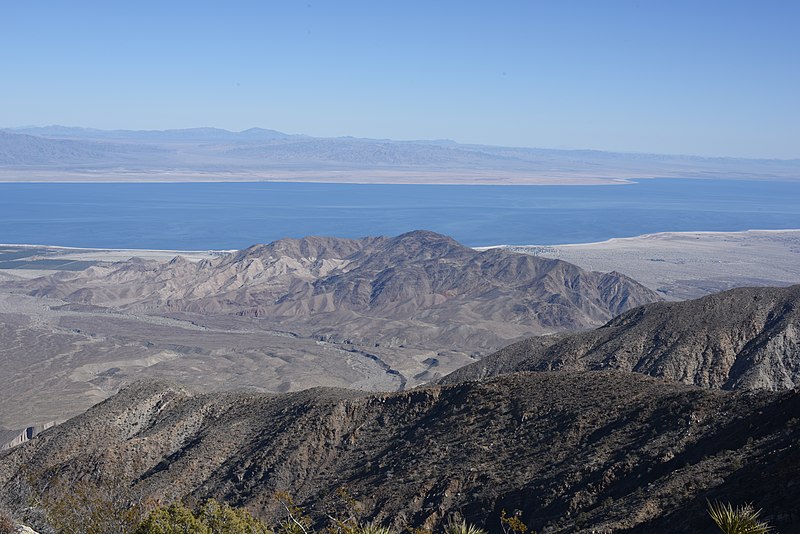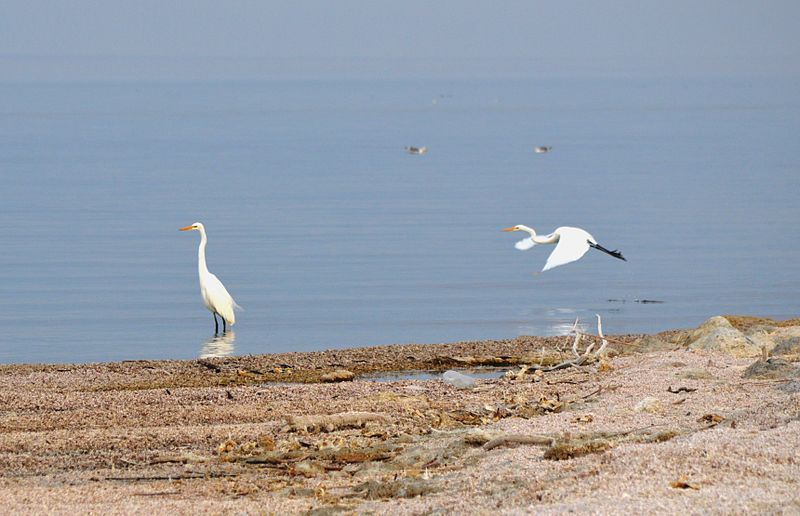Will California’s Salton Sea Lithium Solve America’s Electric Vehicle Battery Problem?
In the realm of rare-earth elements (REEs), lithium distinguishes itself due to its invaluable versatility and potential worth. This explains the momentous news from the Department of Energy (DOE) upon discovering what is projected to be the world’s largest reserve of lithium beneath the Salton Sea in California. The staggering 18 million-ton trove, valued at up to $540 billion, could satiate America’s lithium requirements for many forthcoming decades. This monumental discovery not only represents a significant stride towards self-reliance in the domain of REEs but could also propel the U.S. to the forefront of the global lithium market.
Lithium’s fame has skyrocketed due to its integral role in the electric vehicle (EV) industry. As a critical component of rechargeable batteries, lithium is responsible for powering the electric cars that are transforming transportation globally. However, the significance of lithium extends beyond the EV industry. It is also essential for the production of other vital consumer products. Cell phones and laptops, devices that have become fixtures of modern life, rely on lithium for their operation.

Will the US Surpass China As the World’s Leading Lithium-Ion Battery Producer?
China is the current global top producer of lithium-ion batteries. China produces 75% of the world’s lithium-ion batteries, the most common battery type used in today’s EVs. China is also the world’s largest automobile exporter, including electric vehicles, and leads in EV adoption. In 2022, 29% of passenger vehicles sold in China were EVs, compared to 8% in the U.S.
The notion of a global competitor like China dominating the lithium supply is in stark contrast to America’s strategic and economic interests. The Department of Energy (DOE) recognizes this and has been funding the exploration of domestic lithium sources. A notable example of this effort is a $14.9 million grant awarded to Berkshire Hathaway Energy, owned by Warren Buffett, to investigate the region around the Salton Sea. The sea, situated in the California desert and intersecting Riverside and Imperial counties, has drawn significant attention due to its lithium potential. Salton Sea lithium is gaining incredible nationwide attention.
The Salton Sea, the “Saudi Arabia of Lithium”

California Governor Gavin Newsom, during a tour of the Salton Sea alongside President Joe Biden, labeled the area as the “Saudi Arabia of lithium” in regards to the incredible value of Salton Sea lithium. While this may appear as an overstatement, it’s worth noting that the DOE estimates that Salton Sea lithium could furnish batteries for over 375 million electric vehicles (EVs).
The estimated 18 million tons of Salton Sea lithium could pivot the United States to a leading position in the global lithium supply market. Harnessing this treasure trove of lithium could not only supercharge the production of electric vehicles (EVs) and solar energy but also offer an unprecedented level of energy independence to the United States. With this vast lithium reserve, the nation could eliminate its dependency on countries like China for lithium and auto manufacturing needs. Moreover, given the current market value of lithium estimated at $29,000 per ton, the 18 million tons of lithium in the Salton Sea represents a staggering potential value of $540 billion.
Berkshire Hathaway Energy, EnergySource, and Controlled Thermal Resources Are Harnessing the Rich Salton Sea Lithium Reserves
The potential partnership between the U.S. government and Warren Buffett’s Berkshire Hathaway Energy could significantly expedite the extraction and production of lithium, driving a surge in profitability for the industry. Berkshire Hathaway Energy currently operates ten geothermal power plants on the Salton Sea and is not the only company harnessing the rich lithium reserves in the region. EnergySource and Controlled Thermal Resources are also prominent players. An intensified focus on Salton Sea lithium production could potentially position America at the forefront of the global lithium market. The ripple effect of this strategic shift could trigger a boom in lithium-based businesses, adding billions or even trillions of dollars annually to the U.S. economy.
The Salton Sea, Famous for Being a Toxic Ghost Town

The current Salton Sea was formed when Colorado River floodwater breached an irrigation canal being constructed in the Imperial Valley in 1905 and flowed into the Salton Sink. This incident, known as the Salton Sea flood, lasted for nearly two years, creating a vast lake in the desert landscape. The Salton Sea thus stands as a testament to both the power of natural forces and the unforeseen consequences of human engineering.
In the 1950s and into the 1960s, the area around the Salton Sea metamorphosed into a flourishing resort destination. This transformative era saw the growth of communities fueled by the construction of hotels and vacation homes. These establishments catered to a surge of tourists lured by the unique allure of a vast lake in the desert landscape. The Salton Sea’s popularity as a vacation spot stimulated local economies, thereby creating a vibrant, thriving atmosphere in a region once characterized by its stark, barren beauty. A wide variety of celebrities, including Frank Sinatra, Bing Crosby, the Beach Boys, Jerry Lewis, and Desi Arnaz, flocked to the lake frequently. They, along with other residents and visitors, would swim, water-ski, golf, and party. It was nicknamed the “Salton Riviera” and rivaled nearby resort destination Palm Springs.
After 1999, the lake began to shrink as less runoff flowed into it. As the lake bed became exposed, winds whipped up clouds of toxic dust, sending it wafting into nearby communities and causing serious health problems. Even smaller amounts of dust reached as far as the Los Angeles area, where residents occasionally detected a peculiar odor emanating from the lake, and health issues were reported. Local, state, and federal bodies have all struggled to effectively address the problem despite warnings issued decades prior about the dust, dying wildlife, and other environmental issues. In 2018, local agencies declared an emergency. In response, they collaborated with the state to fund and develop the Salton Sea Management Program, a concerted effort to confront the ongoing environmental crisis.
The Imperial County Board of Supervisors held high hopes that this state of emergency would expedite the restoration efforts by making federal funding accessible for the Salton Sea projects. The majority of the state’s fiscal resources for these endeavors are derived from bond measures. California citizens have given the green light to five bond measures dedicated to the Salton Sea restoration projects as of the year 2020. Because of the toxic environment, the area has some of the lowest real estate values in the state of California. It’s now a very stark, depressing, run-down place. Visitors have described it as surreal.
An Important Ecology

The Salton Sea is an important ecological resource in the Lower Colorado Desert in Southern California despite its toxic environment. The desert pupfish is a remarkable example of nature’s resilience and adaptability. As the only native fish species in the Salton Sea, it has earned its place on the federal list of endangered species. What sets the desert pupfish apart is its unique ability to withstand the Salton Sea’s increasing salinity levels. Astonishingly, this tiny, hardy creature can survive in environments with varied salinities—ranging from freshwater to conditions twice as salty as seawater.
The Salton Sea has been termed a “crown jewel of avian biodiversity” by Milt Friend of the Salton Sea Science Office. It hosts the most diverse and probably most significant populations of bird life in the continental United States, rivaled only by Big Bend, Texas. Over 400 bird species have been documented at the location. The Salton Sea is also a major resting stop on the Pacific Flyway. Bird species such as the endangered Yuma Ridgway’s rail, the eared grebe, and the American white pelican depend on this vital body of water for their survival. Its importance as a bird habitat makes the Salton Sea an area of significant concern for environmentalists and bird lovers alike.
Mining the Lithium Responsibly, While Protecting Residents and the Local Environment
While the renewable energy shift heralds a brighter, more sustainable future, it is crucial to acknowledge the environmental costs associated with sourcing the necessary materials. For example, although lithium generates fewer emissions during mining than fossil fuels, the extraction process can be extremely energy-intensive. Notably, these extraction methods can result in air and water pollution, land degradation, and even the risk of contaminating groundwater supplies.
In conclusion, while lithium mining does indeed have its environmental and social impacts, it is a critical component in the development of clean energy, including electric vehicles, and the creation of a more sustainable society in the United States. The extraction of this essential material must be approached with care, respect, and thoughtful consideration for both the environment and the local Salton Sea communities.
Forward-thinking efforts should be channeled into developing sustainable and responsible mining practices while addressing the valid concerns of affected communities. Hopefully, the vastly profitable mining in the area will spark a massive environmental cleanup. By taking such actions, we can ensure the maximization of lithium mining’s benefits for the area, all the while minimizing its negative impacts and moving towards a brighter and more sustainable future.

Electric Vehicle Marketing Consultant, Writer and Editor. Publisher EVinfo.net.
Portfolio: BillPierce.net
